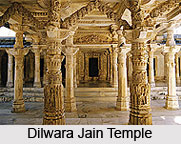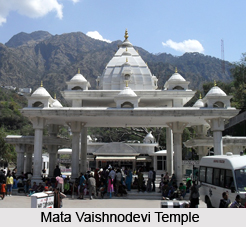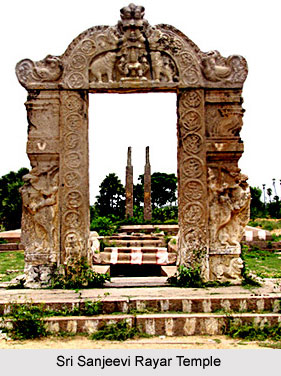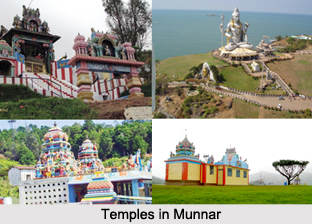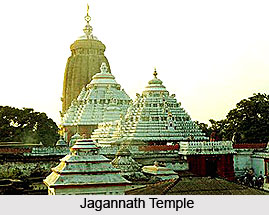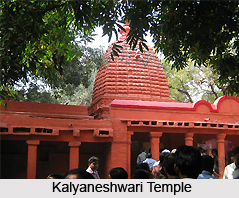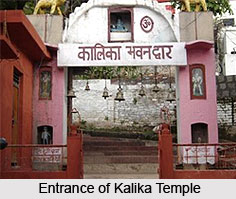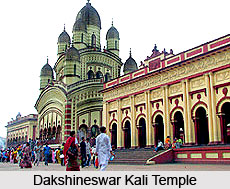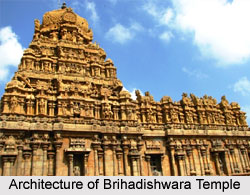 Hatkoti Temple is dedicated to Goddess Durga and Lord Shiva, is one of the main tourist attractions in and around Shimla, Himachal Pradesh. Himachal Pradesh is known as a "Valley of Temples". Lying along the River Pabbar, at village Hatkoti of tehsil Jubbal 104 km from Shimla, the temple is believed to be the spot where the gods fought a pitched battle. The spot is famous for ancient temple of Mata Hateswari in the midst of paddy fields on the right bank of the Pabbar River.
Hatkoti Temple is dedicated to Goddess Durga and Lord Shiva, is one of the main tourist attractions in and around Shimla, Himachal Pradesh. Himachal Pradesh is known as a "Valley of Temples". Lying along the River Pabbar, at village Hatkoti of tehsil Jubbal 104 km from Shimla, the temple is believed to be the spot where the gods fought a pitched battle. The spot is famous for ancient temple of Mata Hateswari in the midst of paddy fields on the right bank of the Pabbar River.
The Hatkoti temples are a group of temples located on the scenic banks of River Pabbar. The main temple in this sprawling complex is dedicated to Goddess Durga while the other smaller ones are the abode of other Hindu deities like Shiva, Ganesha, Parvati and so forth. The Mata Hateswari is another famous temple in the group and is set amidst green paddy fields and the hilly terrains beyond. The temples also boast of 5 idols, which ideally represent the five Pandava brothers of the Mahabharata period. These idols are arranged in accordance to their size—with the first one being the largest.
History of Hatkoti Temple
Based on the architectural styles and design, historians conclude this temple to be built during the Gupta era. Some historians believe that the temples in this area were built by Guru Adi Shankaracharya.
Legend of Hatkoti Temple
A local legend also speaks of an ascetic girl who settled down here to meditate and eventually vanished in the intensity of her meditation. A stone idol was found at the spot. The girl was then recognised as the mother goddess incarnate and the idol consecrated as Hateshwari.
Architecture of Hatkoti Temple
Hatkoti Temple is special for the Hindu pilgrims visiting Himachal Pradesh. The Hatkoti Temple is an abode of Goddess Durga. The statue of the goddess is 1.2 m in height and made of 8 precious metals. In the dark sanctorum, this idol emits a glow because of its bronze make. The complex also has a separate temple dedicated to Lord Shiva.
Architectural design and the style of sculpture show that the Hatkoti temple belongs to the Gupta Period. Several other idols inside these 2 temples stand as examples of great architectural skills. Other structures within the temple complex include a "Kirtan Ghar" (prayer room), a "Dharamshala" (rest house) and "Yagyashala" (room for rituals and sacrifices). The "Hawan Kund" at the center of the main hall houses idols of Lord Ganesha and Lord Vishnu. There is also another large hall within the temple premises called "Satsang Bhawan". It has a seating capacity of around 350 devotees.
Constructed in the artistic tower or Shikhara style, the Hatkoti Temples are topped by conical structures which attract the attention of devotees and tourists alike. The walls of the temples are carved with ornate sculptures and speak volumes of the architectural designs of the eras in which they were created.
Best Time to Visit Hatkoti Temple
Shimla, home of tall pine trees, snow capped mountains and lush terrains can be visited across the year. However, tourists travelling to Hatkoti Temples prefer to do so in the months falling between April and October. These months boast of a pleasant climate and are ideal for infants and senior citizens.
How to Reach Hatkoti Temple
The Shimla Airport is located at a distance of 25 km from the heart of Shimla and is the closest airport in the region. Devotees travelling to Hatkoti Temples can avail taxis from the airport, to take them to Hatkoti. The nearest railway station is located at kalka, which is at a distance of 89 km from the heart of the city.












